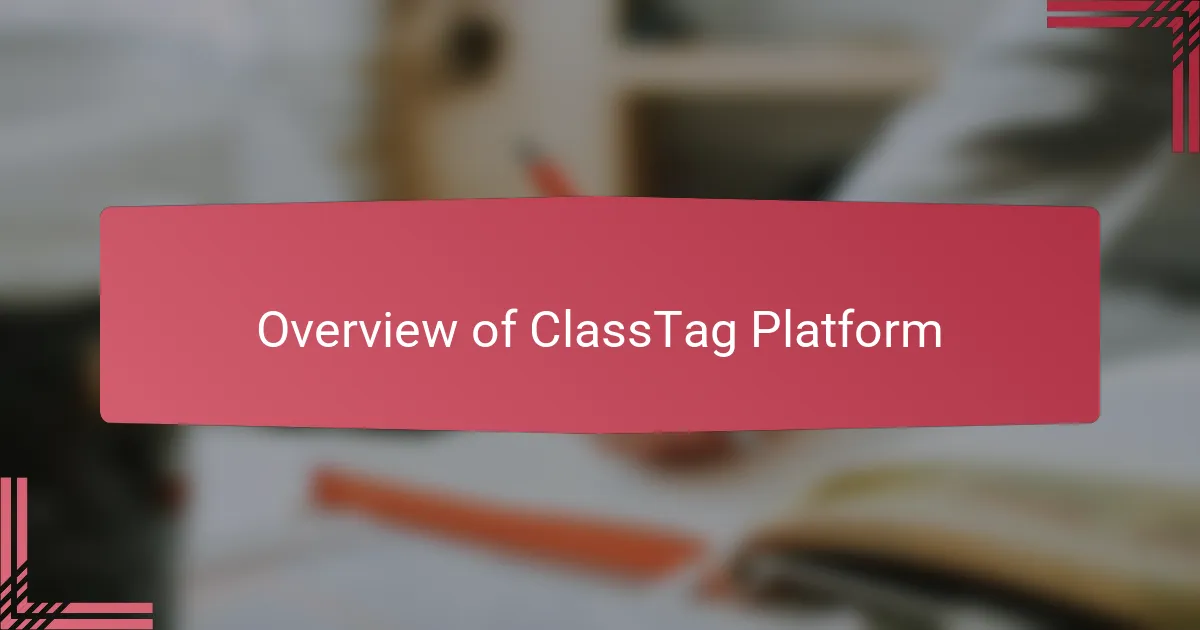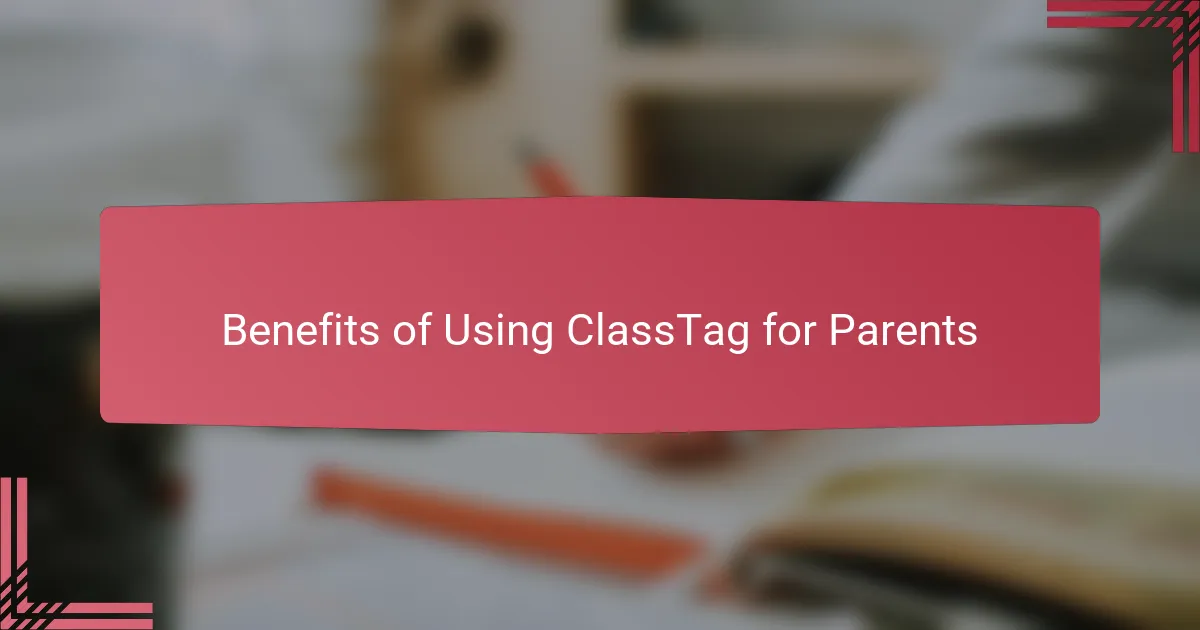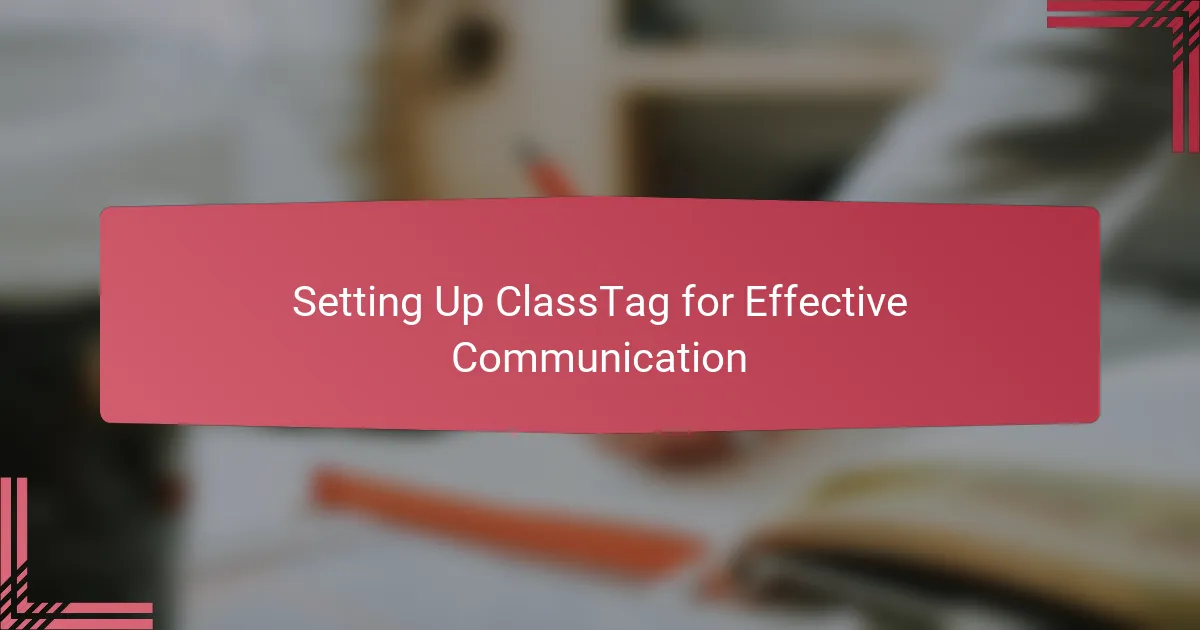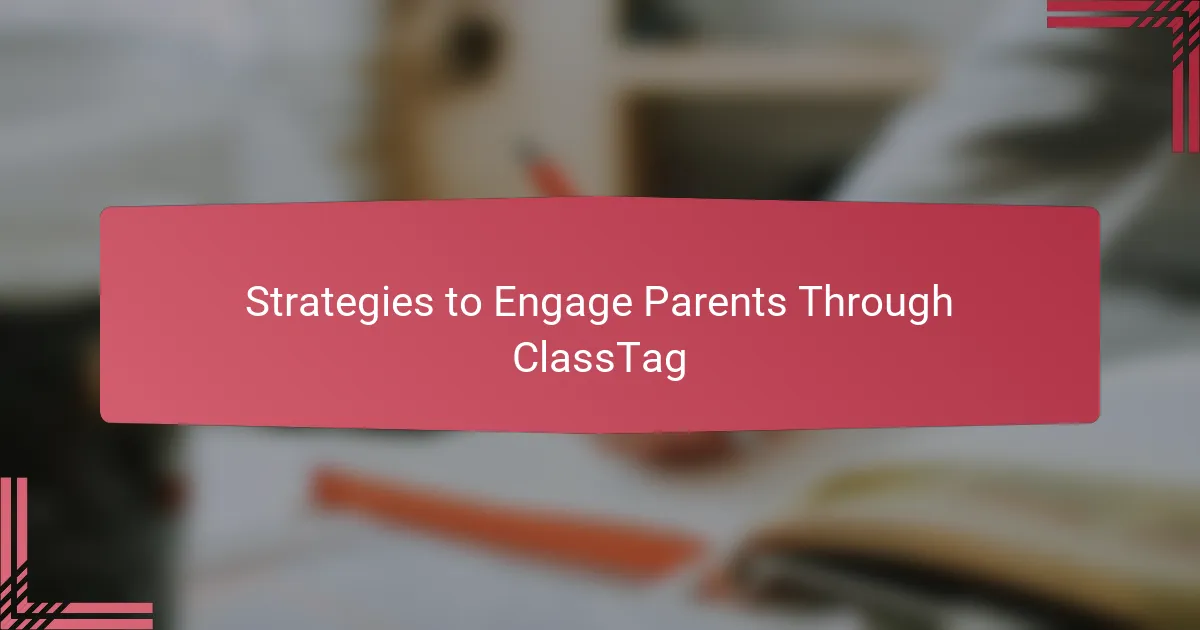Key takeaways
- Activist teacher resources empower educators to foster critical thinking and address social justice in the classroom.
- ClassTag simplifies communication between teachers and parents, promoting engagement through personalized messages and easy access to important updates.
- The platform’s translation features enhance inclusivity, helping diverse families stay informed and connected.
- Sharing classroom moments and small victories through ClassTag strengthens relationships and promotes a sense of community among parents.

Understanding Activist Teacher Resources
Activist teacher resources are about more than just lesson plans—they’re tools that empower educators to challenge inequities and inspire critical thinking. I’ve found that using these resources transforms my classroom into a space where students feel seen and heard, sparking real conversations about social justice. Have you ever considered how the materials you choose can either reinforce the status quo or ignite change?

Overview of ClassTag Platform
ClassTag is a communication platform designed specifically for teachers to connect with parents easily and effectively. From my experience, it simplifies the daunting task of keeping families in the loop, offering everything from announcements to volunteering opportunities in just a few clicks. Have you ever wished there was a way to break down the communication barriers that often leave parents feeling out of touch?
What struck me most about ClassTag is how it centralizes all interactions in one place—messages, calendars, and even translation features—making it accessible for diverse families. This felt like a game-changer in my classroom, where reaching every parent regardless of their background became not just possible but straightforward. Could it be that technology, when thoughtfully used, really helps bridge gaps instead of widening them?
It’s also the ease of use that won me over. I remember the relief of sending reminders and seeing almost immediate responses, which meant parents were more engaged and connected than ever before. Isn’t that what we, as educators, strive for? To build a community where families feel truly part of their child’s learning journey?

Benefits of Using ClassTag for Parents
One thing I appreciate about ClassTag is how it empowers parents to stay informed without feeling overwhelmed. Instead of sifting through endless emails or missing last-minute updates, they get clear, timely notifications right where they prefer. Have you noticed how this kind of seamless communication can ease the anxiety many parents feel about not knowing what’s happening at school?
Another benefit I’ve seen is that ClassTag invites parents to participate actively, not just passively receive information. Whether it’s signing up for events or volunteering, the platform makes involvement simple and accessible. I’d argue that this boosts a parent’s sense of belonging and partnership in their child’s education, which is essential for meaningful engagement.
Perhaps what resonates most with me is how ClassTag supports diverse families through its translation features. Knowing that language barriers won’t stand in the way of communication brings real peace of mind. How often do we overlook how critical clear communication is for building trust? In my experience, ClassTag helps create that trust effortlessly.

Setting Up ClassTag for Effective Communication
Setting up ClassTag begins with a simple step: creating a class and inviting parents. I recall the moment I sent out invitations and started seeing responses trickle in—there was this immediate sense of connection forming that felt both exciting and reassuring. Have you ever experienced that instant feedback loop that just makes you feel your efforts are truly reaching families?
Next, I made sure to customize notifications to suit my parents’ preferences. It might sound small, but tailoring messages so they arrive in a way and time that works best for each family dramatically increased engagement. Don’t we all appreciate when communication feels thoughtful and respects our daily routines?
Finally, I took time to explore ClassTag’s translation and calendar features early on. This wasn’t just about functionality; it represented a commitment to inclusivity that I wanted parents to see and feel from the start. Isn’t it powerful when a tool shows respect for every family’s unique background—and when that respect fosters deeper trust right away?

Strategies to Engage Parents Through ClassTag
One key strategy I’ve found effective is sending personalized messages through ClassTag that acknowledge parents’ unique circumstances. A simple “I noticed you’ve been busy; here’s a quick update on your child” made a big difference in building genuine relationships. Have you ever felt how a little personalization can transform routine communication into a meaningful exchange?
Another approach involves consistently sharing small wins and classroom moments via photos and notes. I remember a parent telling me how seeing their child’s artwork posted on ClassTag brightened their day and deepened their connection to school life. Doesn’t sharing these glimpses into the classroom help parents feel like true partners in education?
Finally, I used the volunteer sign-up and event reminders strategically to invite parents into the classroom community without overwhelming them. ClassTag’s easy RSVP and calendar sync meant more families could participate on their terms. Have you considered how simply lowering barriers to involvement can multiply parent engagement and build a stronger school community?

Sharing Personal Experience with ClassTag
Using ClassTag felt like unlocking a new door to parent connection in my classroom. I still remember one moment when a usually quiet parent responded promptly to a message, sharing how grateful they were just to be “in the loop.” That response reminded me why this communication matters so much—it’s about making families feel truly seen.
I’ve noticed how sharing small, personal notes through ClassTag creates moments of warmth that emails or flyers rarely achieve. It’s in those little exchanges where trust blossoms, making parents feel like active partners rather than distant observers. Have you ever experienced how these tiny gestures can ripple into stronger relationships?
What surprised me most was how ClassTag’s features encouraged parents who’d often felt unsure about participating to step forward. Seeing their names pop up on volunteer lists or event RSVPs gave me a real sense of community growing beyond what I expected. Doesn’t that kind of engagement remind us why connecting with families is at the heart of education?